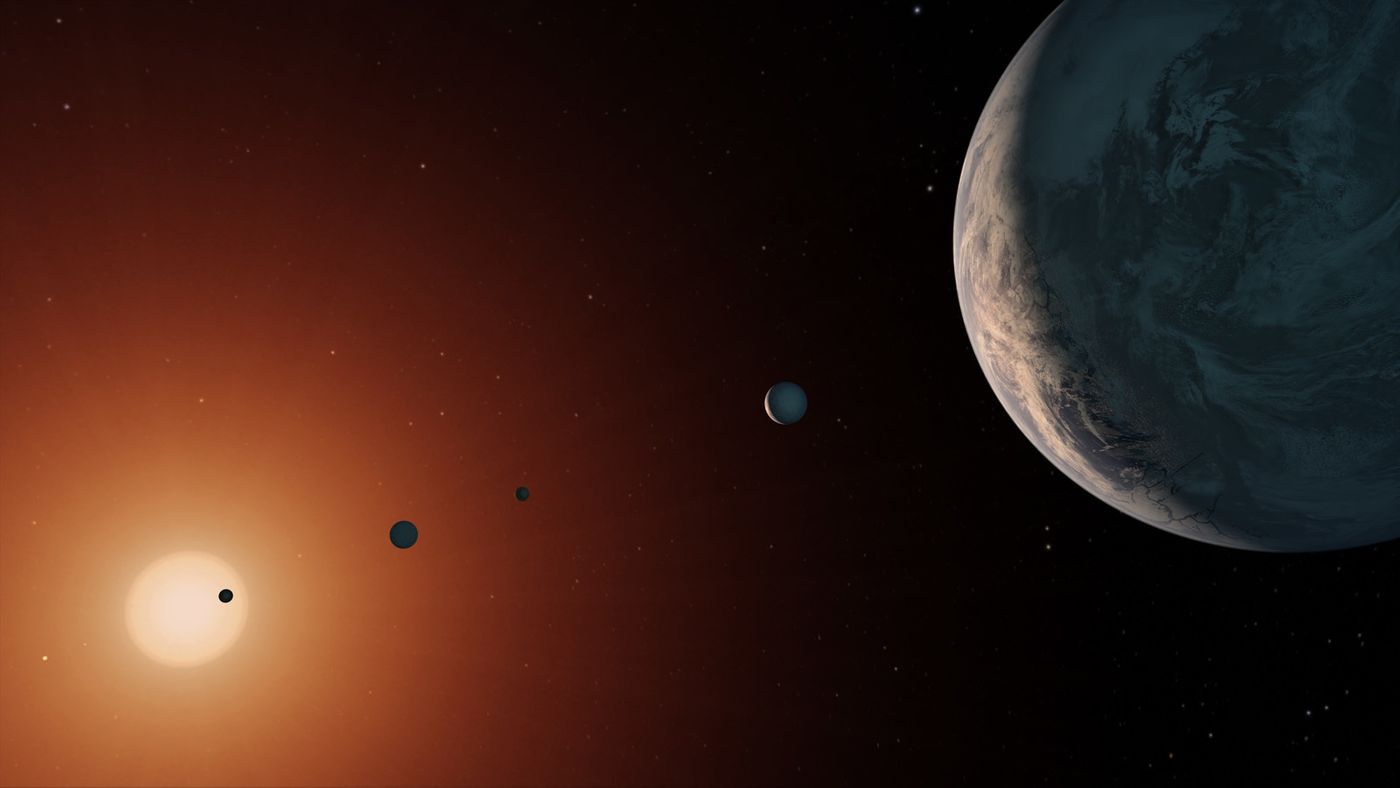TRAPPIST-1 is Older Than Originally Thought
TRAPPIST-1 has remained somewhat of a cosmic mystery since astronomers first unveiled its deepest and darkest exoplanetary secrets earlier this year, but experts continue to scratch their heads while trying to answer the onslaught of questions brought on by this peculiar system.
Image Credit: NASA/JPL-Caltech
As many as 7 Earth-like terrestrial exoplanets orbit the system's host star in a tidally-locked fashion, and at least three of these reside in what’s known as the 'habitable zone.' In this region, liquid water could exist on one or more of these exoplanets, so could they support life?
Related: Volcanoes are making astronomers re-think exoplanetary 'habitable zones'
One of the most important factors we use to figure habitability in another system is to determine the host star’s age, and a new study making its way to The Astrophysical Journal reveals how the TRAPPIST-1 system might be somewhere in between 5.4 and 9.8 billion years old.
The age estimates were made possible by tracking various attributes of the star, such as its movements, the number of flare-ups exhibited during observations, and its atmospheric composition, among other things.
"Our results really help constrain the evolution of the TRAPPIST-1 system, because the system has to have persisted for billions of years. This means the planets had to evolve together, otherwise the system would have fallen apart long ago," said study lead author Adam Burgasser from the University of California, San Diego.
Related: This Kepler image of the TRAPPIST-1 system looks like an 8-bit video game graphic
Comparatively, our solar system is only around 4.5 billion years old, so the latest TRAPPIST-1 age estimate implies that the system is not just older than everything in our neighborhood, but possibly by more than twice as much.
Scientists think younger systems are less likely to support life than older ones because the younger stars tend to be more violent and unpredictable, radiating high-intensity flare-ups that roast nearby exoplanets. On the other hand, stars calm down as they age, creating a rare opportunity for life to form on planets in some older systems.
These new TRAPPIST-1 age estimates have implications for the possibility of life in the system, but to know for sure, we need to know more about the residing exoplanets.
Life requires certain conditions on an exoplanet, such as an atmosphere that shields the surface from stellar radiation. For most exoplanets, this is fairly self-explanatory, but the exoplanets in the TRAPPIST-1 system are tidally locked. Only one side of these exoplanets ever faces the host star, further complicating the conditions.
A bevy of questions that need answering remain, and future observations with the Hubble and Spitzer Space Telescopes, along with the upcoming James Webb Space Telescope, may shed light on whether these exoplanets exhibit life-supporting qualities.
If these exoplanets' hypothetical atmospheres are non-existent or too thin, then we might be looking at dry and desolate wastelands akin to Mars. But if they're too thick and robust, they could trap excess heat from the host star like Venus, which would also be inhabitable.
The ideal atmospheric conditions are somewhere in the middle of the two, but to know what we’re dealing with for sure, we must keep digging with the latest space-exploration technology.
Source: NASA









